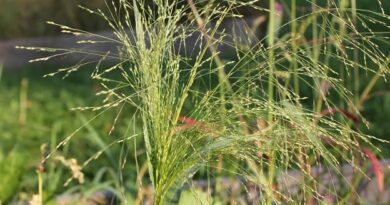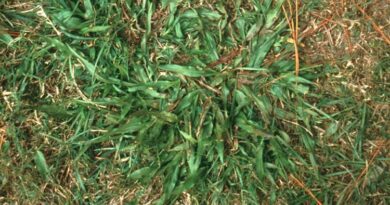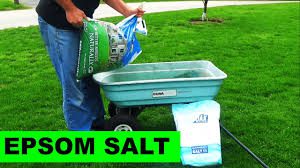Reasons to Invest in Grass Production
The southward migration of herdsmen propelled by effects of climate change and desert encroachment, competition for land resources between herdsmen and local farmers make grass production imperative.
Again, low level of animal production in the savanna zones is generally associated with the inability to get enough grass to feed their animals especially in the dry season.
It is therefore the responsibility of government to ensure livelihood of both herders and farmers by identifying the needs and challenges faced by each group and come up with lasting solutions for the overall development of agricultural sector.
Although Minister of Agriculture and Rural Development, Chief Audu Ogbeh proclaimed that the Federal Government had secured 55, 000ha of land from eleven states of the Federation, and procured exotic grass seedlings to enhance fodder production and boost local beef and milk production, grazing reserves and/ or ranches are yet to be established across the complying states.
Similarly, Mahmud Bello who is the National Coordinator of Grazing Stock Routes, Federal Ministry of Agriculture and Rural Development, also affirmed that 50 hectares of land would be developed as pasture development centres for seed multiplication in all the grazing reserves in the country.
Meanwhile, Mr Yunusa M Ishiaku, a researcher on pasture production at the National Animal Production Research Institute (NAPRI) in Shika, Zaria noted that indigenous grasses like Gamba and Stylo which are palatable animals are on steady decline because of overgrazing hence the need to conserve them.
He advised government to curtail the situation by re-seeding the institute and improving on the local pasture grasses and legumes rather than importing exotic grasses which he said may not be palatable to indigenous livestock breeds.
“So there is no need to import any grass from any country, what we need is to improve on our indigenous grasses that our animals are already used to and it is more palatable to them,”
“There would be a time, if conservation is not done, that you will ask a child about grass they will tell you they don’t know it because they are not seeing it, but the problem is that we are not informed of that decision the Minister made if not we have what he needs here in NAPRI,” he said.
He narrated of how some Senators were amazed at the species available at the institute which one of them had to import from Singapore because of lack of information about its availability thereby incurring high cost of importation.
Mr Ishiaku lamented of how negligence by government has led to poor performance of the Institute, adding that NAPRI has about 100ha of land for pasture production.
He stressed that NAPRI was given the mandate to produce pasture by the Federal Government. One of the mandate he said was to develop improved pasture and range management technology, to identify forage resources that are adaptable to various ecosystems and also to carry out research in all aspects of forages in Nigeria.
Again, Yunusa allayed fears that the alleged imported grass species from temperate countries may not be able to survive the vagaries associated with change in climatic region.
“There is something we call multi-locational trial because these grasses are from temperate regions and are not used to our own environment so they will die, they are not going to survive because their climate condition is different. If you bring a grass and it survives in the north and it did not survive in the south you are not doing what is good because it has to be adaptable to various ecosystems in the country,” Ishiaku said.

He charged livestock farmers to be innovative and invest in grassland and livestock development and advised government to introduce micro ranches and spearhead improvement and funding of research institutes across the country.
Read Also: Comprehensive Guide on Dry Beans Production
Grass Production Farming is more Lucrative than Crop Farming
Mr Yunusa M Ishiaku noted that pasture production is a highly lucrative and profit making business which starts raking in money in four to five months’ time after planting.
According to him, indigenous pasture forages like the Northern Gamba grass and the Southern Gamba grass, Elephant grass, Rhodes grass, and legumes such as Stylosanthes guianensis, popularly known as ‘Stylo’, and the Centrosema spp and Lablab can be cultivated in almost all the ecological zones of the country.
Additionally, he revealed pasture grasses establishes after planting so that after harvesting, the field could be irrigated for the pasture grasses to regrow and that it minimum fertiliser requirement and weeding of unwanted grasses.
“The fertiliser rate for Gamba grass is about 150kg per hectare of NPK 20:10:10 to be applied twice; first at the early stages of growth and second application at later stages of growth that is at three weeks you apply then between six and eight week you reapply. But sometimes if the soil is too poor you have to increase the rate,” he said.
While for leguminous grasses, he advised that Single Super-Phosphate (SSP) fertiliser should be applied during land preparation at the rate of 30kg to 60kg per hectare.
Yunusa highlighted that major problem limiting fodder production is that majority of Nigerians are unaware of its prospects, which he said could be done side by side with food crops farming.
On profitability, Mr Ishiaku held that Congo grass could sell for up to N3, 000 per Kg, Rhodes grass N1, 500 per kg, Gamba grass N1, 000 per kg, while lablab could sell for N1, 500 per kg.
He added that other legumes like Stylo costs N1, 500 per kilogram, Mucuna N1, 500 per kg and wooly finger grass which is propagated vegetatively is sold for as high as N25, 000 for 500sq. metres.
He revealed that apart from sales of pasture bales, seeds could also be harvested and sold for relatively good prices, a kilogram of Gamba grass seeds for instance sells for N1000, while Rhodes grass seeds could fetch up to N1, 500 per kg and Congo grass seeds N3, 000 per kg.
“For example, a farmer cultivates one hectare of land and he decided to plant Congo grass, so he will buy 25kg of Congo grass, during the harvesting period under proper farming management he can be able to harvest 700 bales of the Congo grass using the mechanical method of baling or he can harvest it manually,”
“In NAPRI we are selling one bale which is equivalent to 14kg at N550 per bale and some commercial farmers are selling it up to N1, 000 per bale that is more N350, 000 per hectare which is the minimum a farmer could get,” he said.
Yunusa affirmed that again before harvesting the pasture, more than 200kg of seeds could be harvested from one hectare which could fetch up to N600, 000 for the Congo grass which is a reasonable amount of money compared to food crops farming.
He disclosed that in countries like Kenya, every household has its own pasture land which is divided into paddocks for grazing their animals, adding that this could also be replicated in Nigeria so that there would be sufficient quality feed for animals to graze.
Mr Ishiaku pointed out that Nigeria’s livestock are kept using traditional methods with nearly 90 per cent relying on very low quality grasses with about 10% crude protein during the rainy season and as low as 4%, which is below the critical recommended level of 7%.
“The grasses we have here in Nigeria are low quality compared to the grasses in temperate countries, so our grasses have to be improved, that is why we have to intercrop with legumes to improve the quality of the grass,” he advised.
He noted that the leguminous grasses are very nutritious, most especially the Lablab which has a crude protein of almost 25% like leguminous crops such as cowpea haulm and groundnut haulm which is why farmers mostly use them for fattening purposes because of the high quality protein they have.
As you can see, investing in Grass Production is not a very bad idea at all because Grass Production as it stands now is a very profitable investment to make therefore act today.
Related: Complete List of Crops Introduced into Africa
Do you have any question, suggestion or other contributions? kindly use the comment box provided below for all your contributions. You are also encouraged to please kindly share this article with others you feel can benefit from this information if found useful enough as we may not be able to reach everyone at the same time. Thank you so much for sharing!








